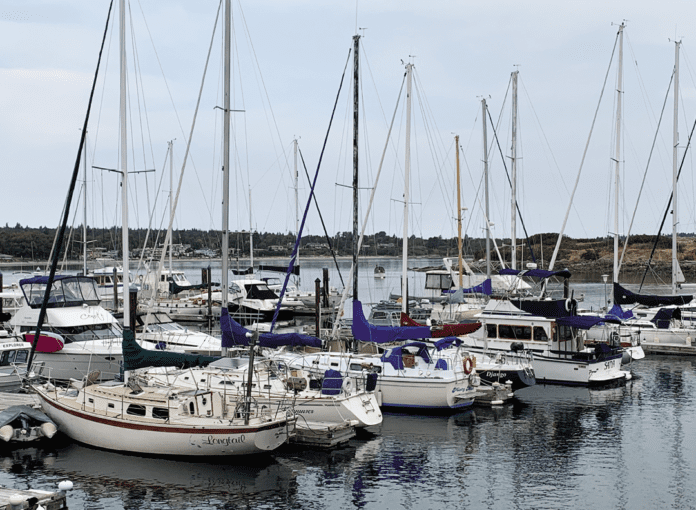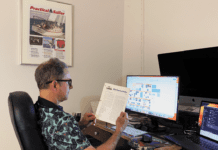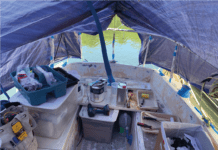Somewhere between Cape Caution, British Columbia and Cape Foulweather, Oregon, I found myself pondering the pros and cons of pilothouse sailboats again. The marinas that skirt the Ship Graveyard of the Pacific—extending roughly from Tillamook Bay, Oregon to Cape Scott, B.C.—are a pilothouse showcase. I saw Ed Monk ketches, Cape George cutters, Bob Perry motorsailers, Nauticats, Gulfs, semi-custom aluminum sloops, and dozens of production boats with DIY fiberglass hard dodgers that mimicked Hallberg-Rassy’s signature feature.
Why so much effort to keep the weather out? The geography tells half the tale. Cape Disappointment and Cape Flattery—named for the way it humbled one of history’s boldest high latitude navigators, Captain James Cook—were just two of the many notorious navigational hazards between the eponymous capes Foulweather and Caution.
The weather and sea conditions tell the other half of the tale. As I quickly found out during my few forays offshore, even on a particularly mild summer day, the fog, currents, and frigid waters of this region test the small boat navigator’s abilities.
And the boat must be up to the task.
The 19-foot skiff run by Captain Dennis Kay, a liveaboard sailor who took me on a cruise around the protected sounds near Tofino, B.C., had more safety equipment than you find aboard the average 32-foot sailboat—two high capacity bilge pumps, two manual emergency pumps, two ship’s batteries (one backup), three survival suits, two EPIRBs, two VHF radios with digital selective calling, three rescue ropes, a rescue ladder, a man overboard pole with beacon, heavy duty ground tackle, etc. His first order of business was to ensure someone aboard could manage the boat or call for rescue should something happen to him.
Back at the marina, after guiding us to some of the oldest cedar trees on the planet, he hopped aboard his custom aluminum sloop, a battle-scarred custom 30 footer. “I used to have a wood sailboat,” he said. “It could take a pounding, but it was too much work to maintain. Aluminum is the way to go up here—you might get dented on a wharf, but it’s not going to hole you.”
Like Kay’s sloop, the boats of Tofino are no beauty queens (fast-growing fungi and gargantuan, well-fed gulls render futile any attempts at spitshine), but they are fit for their mission.
Fitness for mission is often overlooked among builders and buyers today. It’s almost as if the mission of the modern production sailboat is to look pretty during a brochure photo shoot. So as boat show season approaches this autumn, I’d encourage boat buyers and new owners planning an extended cruise to consider their boat’s mission before signing a purchase agreement, adding expensive equipment, or commissioning upgrades.
There’s no need to equip a Chesapeake Bay weekender for a high latitude cruise, but as your homeport edges northward into a seascape crowded with infamous capes, the gap between weekender and offshore cruising boat becomes surprisingly narrow.











































“Fitness for mission is often overlooked among builders and buyers today.” So true. Maybe you need to sail in the PacificNW to understand that concept.
Cruising the Chesapeake, The weather patterns lull you into a comfort zone. When exposed to harsh conditions the reaction is more visceral. When you get that, your decisions about equipment, boat design, sailing are affected.
Thanks for the article. Hope to see you up here again. Maybe your visit might allow a connection with others in the sailing community.
John.
Sailing the PacificNW waters.